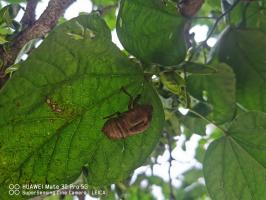When Should You Plant Lilac Trees
Lilacs are undoubtedly the most beautiful, fragrant, and versatile trees to have in your garden. They are easy to grow and require minimal maintenance, making them a popular choice among nature enthusiasts. But when should you plant lilac trees to ensure the best growth and blooming? Let's explore.
Timing is Everything
If you want your lilac trees to bloom vibrantly and produce fragrant flowers in spring, timing is crucial. The ideal time to plant lilac trees is in the fall or early spring. Planting in fall gives the trees ample time to adjust to their new surroundings, develop strong roots, and prepare for winter. Planting in early spring allows the trees to establish themselves before the onset of summer, heat, and drought.
Site Selection
Before planting lilac trees, it's crucial to select the right planting site. Lilacs require full sun to partial shade, so choose a site that receives at least six hours of direct sunlight daily. The soil should be well-drained, moderately fertile, and slightly acidic with a pH between 6.0 and 7.0. Avoid planting in low-lying areas that accumulate water, and stay away from areas near concrete or asphalt that retain heat and radiate it back to the trees, drying them out.
Planting Tips
Once you have selected the site, it's time to plant the lilac tree. Dig a hole twice as wide and deep as the tree's root ball. Place the plant in the hole, ensuring that the top of the root ball is level with the soil surface. Add compost or aged manure to the planting hole to help the tree establish its roots. Water the tree thoroughly and mulch around the base to retain moisture, regulate soil temperature, and suppress weed growth.
Caring for Lilac Trees
After planting, caring for lilac trees is relatively easy. Water regularly during the first two growing seasons to help the tree establish its root system. Lilac trees require about 1 inch of water per week, but avoid overwatering, as it can lead to root rot. Apply fertilizer in the fall after leaves have fallen off the tree, using a slow-release organic fertilizer that contains essential nutrients such as nitrogen, phosphorous, and potassium. Prune lilac trees after flowering to promote branching, control size, and remove dead or diseased branches.
The Bottom Line
In conclusion, planting lilac trees is a great way to add color, fragrance, and beauty to your garden. The best time to plant lilac trees is in fall or early spring, and you must select a planting site that receives at least six hours of direct sunlight daily and has well-drained, moderately fertile, slightly acidic soil. Once planted, it's crucial to water and fertilize the trees regularly and prune them after flowering to ensure optimal growth, blooming, and health.

 how many times do yo...
how many times do yo... how many planted tre...
how many planted tre... how many pine trees ...
how many pine trees ... how many pecan trees...
how many pecan trees... how many plants comp...
how many plants comp... how many plants can ...
how many plants can ... how many plants and ...
how many plants and ... how many pepper plan...
how many pepper plan...





























